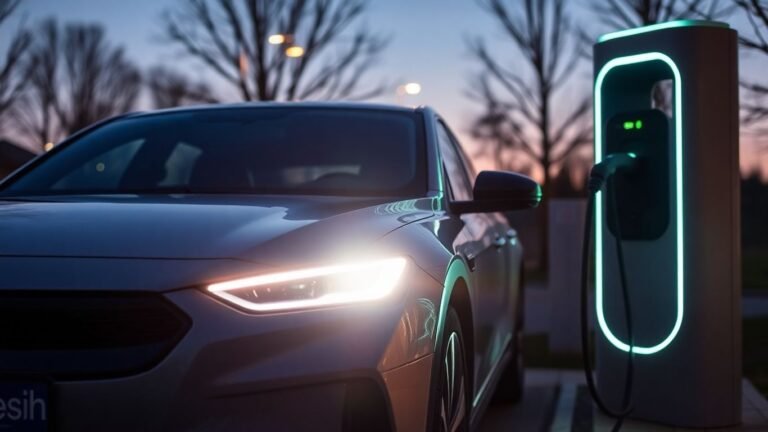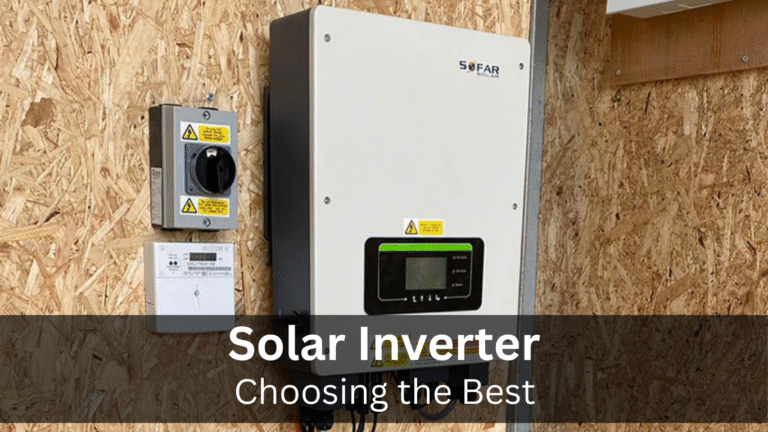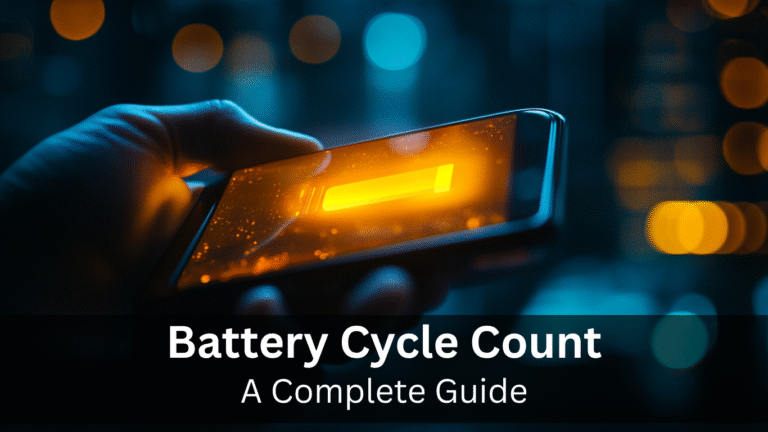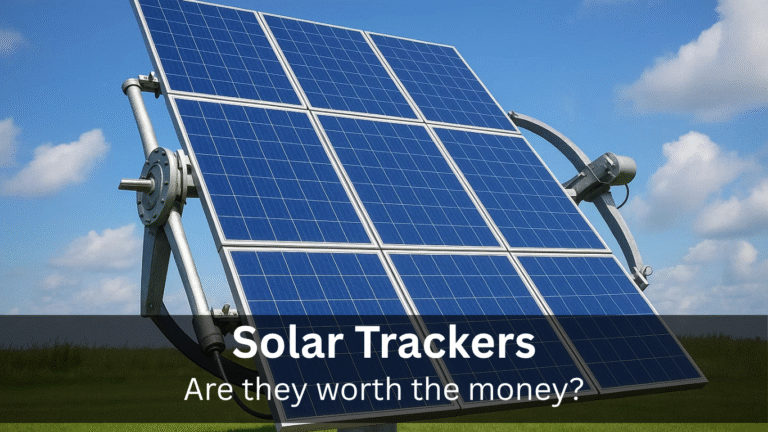Unlocking Efficiency: The Comprehensive Guide to Energy as a Service (EaaS)
Thinking about how your business handles energy? It’s easy to just pay the electric bill and move on, but there’s a smarter way. Energy as a service, or EaaS, is changing the game. It’s not just about getting power; it’s about getting results like lower costs, better reliability, and hitting those green goals. This guide will walk you through what EaaS is all about, why it makes sense for so many businesses, and how it all works.
Key Takeaways
- Energy as a service (EaaS) means you pay for energy outcomes, like savings or uptime, instead of just buying electricity. The provider owns and manages the equipment.
- Adopting EaaS can lead to significant cost savings without needing upfront investment, freeing up capital and resources for your core business.
- Software plays a huge role in EaaS, helping to track energy use, manage performance, and even create new revenue streams from your energy assets.
- Implementing EaaS involves understanding your specific energy needs and choosing the right mix of technologies, like solar and batteries, to meet those needs.
- Several trends, like falling battery prices and the rise of virtual power plants, are making EaaS a more attractive and accessible option for a wider range of businesses.
Understanding The Energy As A Service (EaaS) Model
Defining Energy As A Service (EaaS)
Think of Energy as a Service, or EaaS, as a shift from just buying electricity to actually buying a result. Instead of focusing on kilowatt-hours, EaaS providers bundle together things like energy efficiency upgrades, on-site generation (like solar panels), energy storage, and smart controls. You pay for the outcome – maybe it’s guaranteed savings, reliable power, or hitting your sustainability targets – rather than owning and managing all the complicated equipment yourself. It’s like subscribing to a service that takes care of your energy needs, making it simpler and often more cost-effective.
Key Characteristics Of EaaS
What really sets EaaS apart? For starters, you typically don’t have to put down a big chunk of cash upfront. The EaaS provider handles the investment in new technology and equipment. You then pay for the service, often through a monthly fee or a model tied to the actual savings you achieve. This usually includes a whole package of solutions, not just one thing. We’re talking about solar power, battery storage, electric vehicle charging stations, and the software to manage it all, working together. It’s a pretty neat way to get access to modern energy tech without the financial headache.
Here are some of the main features:
- No Large Upfront Costs: The provider invests in the technology.
- Outcome-Based Payments: You pay for results like savings or uptime.
- Bundled Solutions: Combines multiple technologies like solar, storage, and controls.
- Provider Ownership & Maintenance: The provider owns and maintains the equipment.
The core idea is to make energy management easier and more predictable for the customer, while the provider takes on the financial and operational risks associated with the energy assets. This creates a shared interest in performance and efficiency.
The Evolution From ESCOs To EaaS
You might have heard of Energy Service Companies, or ESCOs. They’ve been around for a while, focusing mainly on making buildings more energy-efficient through projects like upgrading lighting or HVAC systems. ESCOs often work on a performance contract, meaning they get paid based on the actual energy savings they deliver. EaaS takes this a step further. While ESCOs were a big step, EaaS providers offer a broader range of services and often use subscription-based models. They’re not just about efficiency; they’re about providing a complete energy solution that can include generating your own power, storing it, and managing it all smartly, moving beyond just selling kWh to selling a reliable energy outcome.
Benefits Of Adopting Energy As A Service (EaaS)

Thinking about Energy as a Service (EaaS) for your business? It’s not just about getting power; it’s a whole new way to manage your energy needs, and honestly, it comes with some pretty sweet perks. Forget about the headaches of managing complex energy projects yourself. EaaS providers basically take that burden off your plate, letting you focus on what you do best.
Financial Advantages And Cost Savings
One of the biggest draws of EaaS is how it impacts your wallet. You can modernize your energy setup without shelling out a ton of cash upfront. Instead of big loans or capital expenses, EaaS often structures payments like operating expenses, which can be way easier on your budget. Plus, you can start seeing savings right away with efficiency upgrades and renewable energy. This means lower utility bills over time and less money spent on unexpected repairs. It’s like getting a financial boost while also making your business greener.
- Zero Upfront Capital: No need for big loans or immediate cash outlay.
- Immediate Energy Savings: Start cutting utility bills from day one.
- Reduced Maintenance Costs: Less worry about unexpected repairs and downtime.
- Predictable Energy Costs: Lock in rates to guard against rising utility prices.
EaaS shifts the financial risk from the customer to the provider. You pay for the service and the outcomes, not for the equipment or the installation itself. This makes it easier to budget and manage expenses.
Operational Efficiencies And Resource Optimization
Let’s be real, managing energy systems can be a real time sink. EaaS providers handle the nitty-gritty, from initial audits and installation to ongoing maintenance. This frees up your internal team and resources. Think of them as an extension of your staff, but with specialized energy know-how. This means less administrative work for you and more time to concentrate on your core business operations. It’s a smart way to get complex energy projects done without stretching your own team too thin. Plus, outsourcing electricity procurement becomes a much simpler process.
Accelerating Sustainability And Decarbonization Goals
If your company is looking to go green, EaaS can be a real game-changer. These services often bundle in low-carbon technologies and strategies, helping you hit your sustainability targets faster. It’s a way to scale up your green initiatives without the usual hurdles. By adopting EaaS, you’re not just cutting costs; you’re also positioning your business as a forward-thinking leader, which is good for your brand and your future competitiveness.
Enhancing Reliability And Mitigating Risks
Grid instability and rising energy costs are no joke. EaaS solutions can help make your energy supply more dependable. By improving energy efficiency and integrating things like battery storage, you can reduce your reliance on the grid during peak times. This not only saves money but also provides a buffer against outages. Performance-based contracts mean the provider is motivated to keep things running smoothly, which adds a layer of security for your operations. It’s about making your energy use more predictable and less risky.
The Crucial Role Of Software In Energy As A Service (EaaS)
Think of Energy as a Service (EaaS) like a subscription for your energy needs, but way more advanced. It’s not just about getting electricity; it’s about getting reliable power, saving money, and hitting those green goals, all without you having to buy and manage all the complicated equipment yourself. But how does all this magic happen? It really comes down to smart software. Without it, EaaS would be pretty much flying blind.
Data Aggregation And Performance Visualization
First off, EaaS platforms need to pull in data from everywhere. This means your solar panels, your battery storage, your smart thermostats, maybe even your electric vehicle charger – all of it. The software acts like a central hub, gathering all this information. It then puts it into easy-to-understand dashboards. You can see exactly how much energy you’re generating, how much you’re using, and where your savings are coming from. This transparency is key to building trust and showing the real value of the EaaS setup. It helps you spot unusual energy use patterns or see if your equipment isn’t performing as expected. It’s like having a super-detailed report card for your building’s energy performance.
Enabling Real-Time Control And Optimization
But it’s not just about looking at data; it’s about using it. The software allows for real-time control. Imagine your EaaS provider being able to automatically shift your energy usage to cheaper times of the day, or discharge your battery when electricity prices are highest. This kind of optimization happens automatically in the background, thanks to sophisticated algorithms. It can also help manage things like demand response programs, where your energy use is slightly adjusted during peak grid times to help keep the lights on everywhere. This is especially important for businesses that rely on consistent power, like data centers or hospitals. It means the system is always working to save you money and keep things running smoothly.
Facilitating Revenue Generation And New Projects
Beyond just saving you money, the software in EaaS can actually help you make money. For example, if you have battery storage, the software can help aggregate it with other systems in your area to form a virtual power plant (VPP). These VPPs can then sell services back to the grid, like helping to stabilize it during high demand. Your EaaS provider manages all this complexity.
The data collected also helps identify opportunities for future upgrades or new energy projects. It’s a continuous cycle of improvement and value creation. This kind of approach is really changing how we think about energy, making it more dynamic and responsive to both our needs and the grid’s demands. It’s a big step towards more localized energy solutions, which can be a real game-changer for communities looking to gain more control over their energy future local energy initiatives.
The software backbone of EaaS is what transforms a collection of energy assets into a smart, responsive system. It’s the intelligence that allows for predictive maintenance, automated cost savings, and the integration of diverse technologies into a single, managed service. Without this digital layer, the promise of EaaS would remain largely unfulfilled, unable to adapt to changing energy markets or customer needs effectively.
Implementing Energy As A Service (EaaS) Solutions
So, you’re thinking about EaaS. That’s great! But how do you actually get started? It’s not just a matter of flipping a switch. You need a plan. This section breaks down how to put EaaS into action for your business, focusing on making sure it fits your specific situation and goals.
Assessing Site-Specific Needs and Energy Usage
Before you can even think about solutions, you’ve got to know what you’re dealing with. This means taking a good, hard look at how your facility uses energy right now. What are your peak times? Where are you seeing the biggest energy bills? Understanding these details is key to figuring out how EaaS can help you optimize business energy usage. It’s about getting a clear picture of your current consumption patterns, identifying inefficiencies, and pinpointing areas where improvements can make the biggest difference. This isn’t a one-size-fits-all deal; what works for a factory might not work for an office building.
Tailoring Solutions With Diverse Energy Technologies
Once you know your energy habits, you can start looking at the tools. EaaS providers bring a whole toolbox of technologies to the table. We’re talking about solar panels, battery storage, smart building controls, and maybe even EV charging stations. The trick is picking the right mix for your needs. Maybe you need to smooth out your peak demand with batteries, or perhaps generating your own power with solar makes the most sense. It’s about putting together a package that addresses your specific challenges and helps you achieve sustainable energy solutions for companies. This often involves looking at renewable energy management contracts that bundle different technologies together.
Aligning With Local Incentives and Utility Programs
Don’t leave money on the table! There are often local and utility-specific programs designed to encourage energy efficiency and renewable energy adoption. These can come in the form of rebates, tax credits, or special rates. A good EaaS partner will know how to navigate these programs and incorporate them into your solution. This alignment can significantly reduce costs and make your EaaS project even more attractive, directly contributing to reducing operational energy costs. It’s about making the most of the support systems already in place.
Here’s a quick look at what to consider:
- Energy Audit: A thorough review of your current energy use.
- Technology Assessment: Matching available tech to your identified needs.
- Incentive Research: Finding and applying for relevant local and utility programs.
- Financial Modeling: Projecting savings and return on investment.
Implementing EaaS isn’t just about installing new equipment; it’s a strategic shift in how you manage and pay for energy. It requires careful planning and a clear understanding of your own operational landscape. Working with experienced EaaS providers can simplify this process significantly.
Key Trends Shaping The Energy As A Service (EaaS) Landscape
The energy world is always changing, and Energy as a Service (EaaS) is right in the middle of it. Several big shifts are making EaaS more popular and useful for businesses and even homes. It’s not just about getting electricity anymore; it’s about getting reliable, clean, and affordable energy solutions without the hassle of owning and managing the equipment yourself.
Declining Battery Prices and Time-Shifting Capabilities
One of the biggest game-changers is how much cheaper batteries are getting. This makes storing energy generated during sunny or off-peak hours much more affordable. Think of it as a way to ‘time-shift’ your energy use. You can store solar power generated during the day and use it when electricity prices are highest in the evening, or use stored energy to avoid peak demand charges. This is becoming a really smart way for homes and small businesses to cut down on their electricity bills. It’s a big deal for managing costs, especially with fluctuating energy prices.
Monetizing Behind-The-Meter Assets Through Virtual Power Plants
Remember all those solar panels and batteries people have installed? Well, now there’s a way to make them work harder. Virtual Power Plants (VPPs) are a hot topic. They group together many of these distributed energy resources (like rooftop solar and home batteries) and allow them to act as a single power plant. This means you can potentially earn money by letting your assets help stabilize the grid, especially during times of high demand. It’s a new revenue stream that EaaS providers are helping to manage, turning your own energy equipment into an income source. The utility EaaS market is growing fast, and VPPs are a big part of that expansion.
The Growing Importance Of Flexible Load Management
As more renewable energy comes online, the grid needs to be more flexible. Flexible load management is all about adjusting energy consumption in response to grid signals or price changes. For commercial and industrial users, this means EaaS solutions can help manage things like HVAC systems or industrial machinery to reduce energy use during peak times. This not only saves money but also helps the grid avoid strain. It’s a win-win situation that makes operations more efficient and supports grid stability.
Smarter Incentive Structures For Energy Solutions
Governments and utilities are getting more creative with incentives to encourage the adoption of clean energy and energy efficiency. We’re seeing things like tax credits for solar and storage, and even special bonuses for projects that provide grid services. EaaS providers are really good at figuring out how to combine these different incentives to make projects more financially attractive for customers. This means you can get access to advanced energy technologies with even lower upfront costs or better long-term savings. It’s making clean energy more accessible than ever before.
The shift towards EaaS is driven by a desire for predictable energy costs, improved reliability, and a simpler path to sustainability. Providers are bundling technologies and services, taking on the financial and operational risks, allowing customers to focus on their core business while benefiting from advanced energy solutions.
Is Energy As A Service (EaaS) The Right Strategy For You?

So, you’re wondering if Energy as a Service (EaaS) is the move for your business. It’s a fair question, and honestly, it’s not a one-size-fits-all answer. But, if you’re nodding along to any of these points, it might be time to seriously look into it.
Identifying Businesses Facing High Electricity Costs
Let’s face it, utility bills can be a real headache, especially when they keep climbing. If your company is spending a significant chunk of its budget on electricity, EaaS could offer some relief. Instead of just paying whatever the utility charges, EaaS providers often bundle services like solar panels, battery storage, and smart controls. They take on the upfront cost and the responsibility for managing these systems. You then pay a predictable fee, often based on the savings you achieve.
This means you can get access to cleaner, more efficient energy solutions without a massive initial investment, potentially leading to substantial long-term savings. It’s about shifting from a variable, often rising, cost to a more manageable, fixed expense. Think about it like subscribing to a service rather than buying a whole power plant yourself. This approach can really help businesses that are sensitive to energy price fluctuations and are looking for ways to stabilize their operating expenses. For many, this is the primary driver to explore energy service options.
Supporting Critical Operations With Reliable Energy
What happens when the lights go out? For some businesses, a power outage isn’t just an inconvenience; it’s a disaster. Whether you’re running a data center, a hospital, or a manufacturing plant with sensitive equipment, reliable power is non-negotiable. EaaS solutions can integrate backup power systems, like batteries and generators, alongside your primary energy sources. The provider manages the entire system, ensuring it’s always ready to kick in when needed. This means you get the peace of mind that comes with knowing your critical operations can continue uninterrupted, even during grid disturbances. It’s about building resilience into your energy supply.
- Guaranteed Uptime: Many EaaS contracts focus on delivering a specific level of operational availability.
- Integrated Backup: Seamless switching to backup power sources during outages.
- Proactive Maintenance: The provider handles all upkeep to keep systems running smoothly.
Exploring Clean Energy Options Without Direct Ownership
Maybe you’re keen on going green, reducing your carbon footprint, and meeting sustainability goals, but the idea of owning and managing solar panels or battery storage feels overwhelming. EaaS is designed for exactly this scenario. You can adopt renewable energy technologies and benefit from their environmental advantages without the hassle of direct ownership. The EaaS provider handles everything from installation and maintenance to performance monitoring. This allows you to focus on your core business while still making a positive environmental impact. It’s a way to embrace sustainability and potentially improve your company’s image as a forward-thinking, responsible organization.
EaaS allows businesses to access advanced energy technologies and services through a subscription or performance-based payment model. This removes the need for significant upfront capital investment and shifts the responsibility for system operation, maintenance, and performance to the service provider. The focus is on delivering desired energy outcomes, such as cost savings, reliability, or carbon reduction, rather than selling energy as a commodity.
Ultimately, if you’re looking to cut down on energy expenses, ensure your operations have dependable power, or want to adopt cleaner energy solutions without the headaches of ownership, EaaS is definitely worth a closer look. It’s a flexible model that’s changing how businesses think about and use energy.
Wrapping It Up: The Future is Service-Based Energy
So, we’ve talked a lot about Energy-as-a-Service, or EaaS. It’s basically a way to get better energy use without all the upfront costs and headaches. Think of it like subscribing to a service instead of buying a whole system. Companies that offer EaaS handle the equipment, the installation, and the upkeep, and you just pay for the results, like energy savings or reliable power.
This whole model is becoming more popular because electricity prices are up, and the grid can be a bit shaky sometimes. Plus, there are more rules about cutting down on carbon emissions. EaaS helps businesses save money, stay reliable, and even make money from their energy setup. It’s a pretty smart way to handle energy these days, making things easier for businesses and better for the planet too. It seems like the future of energy is definitely moving towards these service-based approaches.
Frequently Asked Questions
What exactly is Energy as a Service (EaaS)?
Think of EaaS like a subscription for your energy needs. Instead of buying electricity or solar panels outright, you pay a regular fee for the energy services you use, like having reliable power, saving money on bills, or reducing your carbon footprint. The company providing the service owns and manages the equipment, so you don’t have to worry about upfront costs or maintenance.
How is EaaS different from what Energy Service Companies (ESCOs) do?
ESCOs have been around for a while, focusing mainly on making buildings more energy-efficient. They often get paid based on the savings they help you achieve. EaaS is like an upgraded version. It still focuses on saving energy, but it also includes a wider range of services like solar power, battery storage, and even electric vehicle charging, all bundled together as a service you pay for.
What are the main advantages of using EaaS?
The biggest plus is that you avoid big upfront costs. You can get modern energy tech without spending a fortune. It also helps you save money on your energy bills right away, makes your energy supply more dependable, and helps your business meet its green goals, like reducing pollution. Plus, you get experts managing your energy systems for you.
Is EaaS only for huge businesses with big buildings?
Not at all! While big companies were some of the first to use EaaS, the model is becoming popular for smaller businesses and even homes. As technology like batteries gets cheaper, more people can benefit from services that help them save money and use cleaner energy without owning the equipment.
What kind of technology is usually included in an EaaS package?
EaaS packages can be quite flexible. They often include things like solar panels to generate your own power, battery storage to save energy for later or for when the grid goes down, smart controls to manage energy use, and sometimes even electric vehicle chargers. It’s all about creating a custom energy solution for your specific needs.
How does software play a role in EaaS?
Software is super important for EaaS! It helps gather all the information about your energy use from different devices, shows you how things are performing on easy-to-understand screens, and allows for real-time adjustments to save energy. It’s the ‘brain’ that makes sure everything runs smoothly and efficiently, helping to manage everything from solar panels to batteries.








